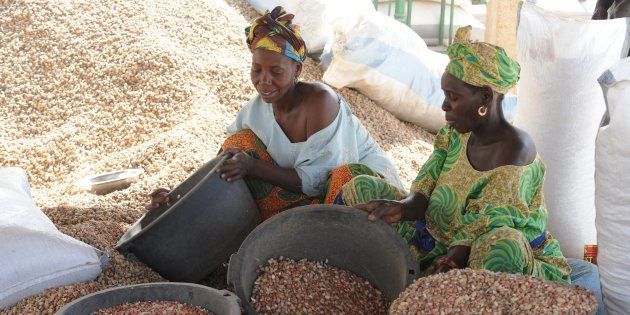
People of my age, mid-20s, might probably associate peanut butter with warm childhood memories. Because of such memories, I am one of those people who always make sure that there is some peanut butter in my cupboard – just in case I need a quick sandwich or a snack.
In fact, one might even assume that there are some people like myself out there who have kept the peanut butter and peanut demand strong, in turn, stimulating domestic peanut production.
Contrary to this view, a closer look at the South African peanuts industry reveals that it has not performed well in the recent past.
The South African edible peanut consumption has been decreasing over time due to consumer price sensitivity – a degree to which consumers' behaviours are affected by the price of peanuts. Meanwhile, the peanut butter market has maintained a relatively stable consumption trend.
South Africans basically consume peanuts in two forms; as edible nuts, as well as processed peanut butter. Peanuts for processed (peanut) butter have been fairly stable throughout the years, just below 24,000 tons a year. This market (peanut butter) grew significantly in 2015, reaching 27,641 tons - a 15% growth from 2005.
In contrast, the edible peanuts market was fairly stable between 2005 and 2011, but declined significantly - by 47% between 2012 and 2015. This consumption decline was largely in line with price increases in the South African peanuts market.
In fact, choice grade prices increased by 57% between 2000 and 2010. This was on the back of global peanut price increases, which saw the US Runner (40/50 Rotterdam) prices increasing by 45% between 2000 and 2010; from $884/ton to $1 284/ton.
From 2010 to 2016, international peanut prices (US Runner 40/50, Rotterdam prices) increased by 5%, while the domestic prices (choice grade) doubled - from R5,500/ton to R11,500/ton. Moreover, sundry producer prices increased from R3,500/ton to R8,000/ton. Crushing (Eat) producer prices increased from R2,500/ton to R3,500/ton.
The international peanut producers responded positively to these price increases, by increasing their production by roughly 6% in the period between 2010 and 2016, to 29 million tons.
In contrast, South African peanut production has been declining over the years. This year, the situation has also been propelled by the 2015/16 El Niño induced drought, thus total peanut output declined by 70% year-on-year to 18,850 tons.
Surely, this is not a desirable trend – there is a need for increased investments in higher yielding peanut seed varieties, as well as improvements in production efficiency. Important to remember is that, South Africa was once a large exporter of peanuts, as such revitalising the industry would have some benefits for the South African society – through lower prices and job creation.
